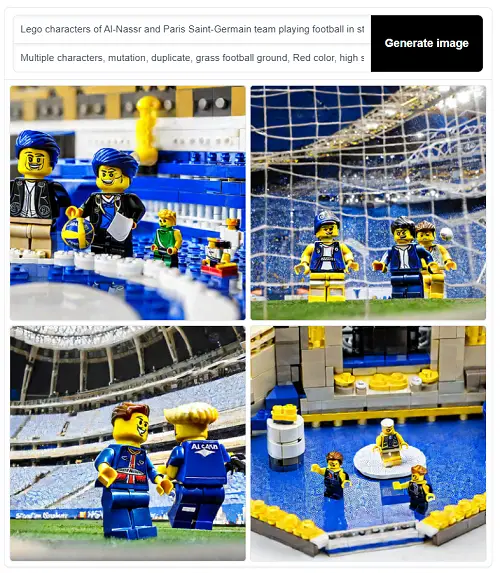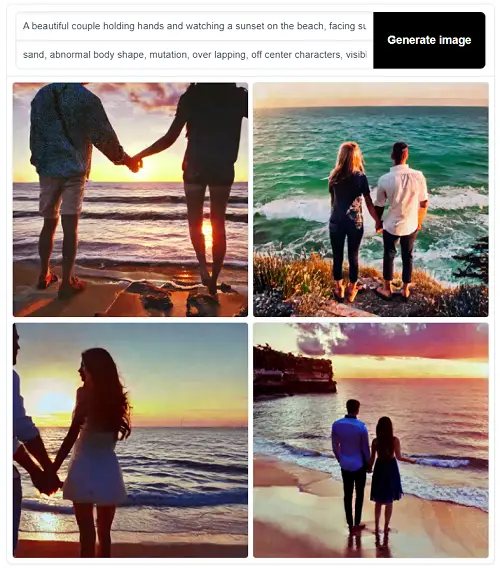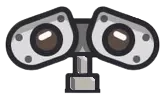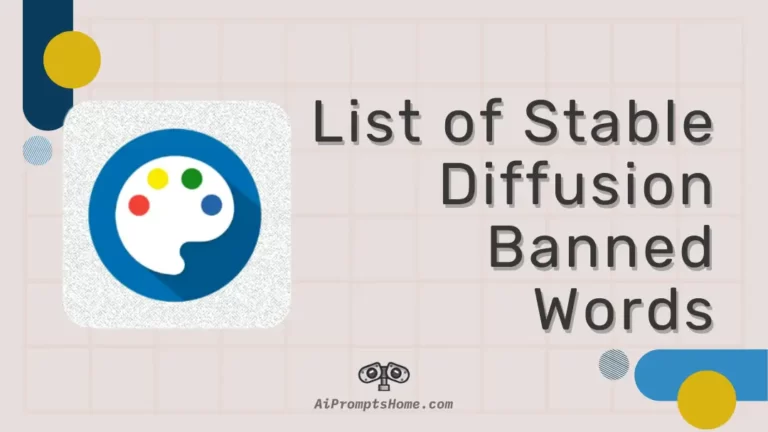Advanced AI models like Stable Diffusion and Midjourney are powerful enough to create wonders just by using a combination of descriptive texts.
As exciting as it may sound, tools like Stable Diffusion haven’t reached the level where the images produced by them can be considered ‘Perfect.’ Even if you inject the best prompt as input, you still need Negative prompts to reach a point where the results look perfect.
In this post, you will learn about the best Negative Prompt that can be used with any type of image and also some examples to help you understand how to implement them.
What is a Negative Prompt in Stable Diffusion
Answer in Easy Language: Negative Prompts are the details and elements that you want Stable Diffusion to exclude specifically when producing an image.
If we dive deeper, we will understand that the AI model does not just exclude the details added in Negative Prompts. Instead, Stable Diffusion creates an image using the Negative Prompts, subtracting the same from the final result.
So, Stable Diffusion Negative Prompt means the words, elements, procedure, etc., that the model understands and excludes from the final result.
Universal and Conditional Negative Prompts
In our experience with Stable Diffusion, we have understood that there are two parts to a negative prompt – Universal and Conditional Negative Prompt.
Universal negative prompts, as the name suggests, can be used in combination with any type of prompt. That means, you can use the same set of negative prompts in multiple scenarios to get the best possible result.
Conditional negative prompts on the other hand, are used per the user’s requirement and actually depend on the kind of image one needs to create. Meaning, you cannot use same conditional negative prompts everywhere.
Depending on your preference, you can use either both types of prompts or only one. In our testing, we have found that Univeral Negative Prompts really helps getting better results.
This is the easiest way to understand what exactly Negative Prompts do. In the next part, we will understand the usage of Negative Prompts with some examples. And later in this post, you can check the list of Negative Prompts for Stable Diffusion.
Best Negative Prompts in Stable Diffusion
Now that you understand the negative prompts better, let us now see some examples.
Example 1 –
Here, you can see an excellent example of the combination of Universal and Conditional Negative Prompts. Here, the quantity of Universal negative prompts is more than the Conditional negative prompts.
The number of prompt used totally depends on the requirement. If we needed, we could have added more conditional negative prompts.
In the Negative Prompt section, the text in Blue color shows Universal Negative Prompts, and whereas Orange color shows Conditional Negative Prompts.
Original prompt –
a portrait photograph of a beautiful Chinese girl in winter clothing with long wavy brown hair, standing outside in snowy city street, ((sultry flirty look)), freckles, beautiful symmetrical face, no-makeup makeup look, stunning modern urban upscale environment, ultra realistic, elegant, highly detailed, intricate, sharp focus, depth of field, f/1. 8, 85mm, medium shot, (centered image composition), (professionally color graded), ((bright soft diffused light)), volumetric fog, trending on instagram, trending on tumblr, hdr 4k, 8k
Original image –

Negative Prompt –
cartoon, 3D, disfigured, bad, art, deformed, extra limbs, weird, blurry, duplicate, morbid, mutilated, out of frame, extra fingers, mutated hands, poorly drawn, hands, poorly drawn face, mutation, ugly, bad, anatomy, bad proportions, extra limbs, clone, clone-faced, cross proportions, missing arms, malformed limbs, missing legs, mutated, hands, fused fingers, too many fingers, photo shop, video game, ugly, tiling, cross-eye, mutation of eyes, long neck, bonnet, hat, beanie, cap, B&W,
Final image –

Example 2 –
The following example shows how you can generate good images even without using any Conditional negative prompts. Just use some Universal negative prompts and get the best possible result.
Here, we are assuming you used some fantastic prompts as we did. Sigh emoji!
If you want to learn how to use better prompts in Stable Diffusion, make sure you check related articles on our site.
Well, we are not the most talented people out there, and we also use the Image to Prompt generator to get the best prompt ideas.
Original prompt –
A portrait of a Blonde women, Medieval, model shoot style, extremely detailed unity, 8K wallpaper, full shot body photo of the most beautiful artwork in the world, beautiful woman, pale skin, Golden crowned, diamonds, platinum, medieval architecture, professional Majestic oil painting by Ed blinkey, trending on art Station, high detail, sharp focus, photorealistic painting
Original image –

Negative Prompt –
cartoon, 3D, disfigured, bad, art, deformed, extra limbs, weird, blurry, duplicate, morbid, mutilated, out of frame, extra fingers, mutated hands, poorly drawn, hands, poorly drawn face, mutation, ugly, bad, anatomy, bad proportions, extra limbs, clone, clone-faced, cross proportions, missing arms, malformed limbs, missing legs, mutated, hands, fused fingers, too many fingers, photo shop, video game, ugly, tiling, cross-eye, mutation of eyes
Final image –

Example 3 –
Another example of how you can use both Universal and Conditional Negative Prompts to get the best results, even for images that include animals.
Original prompt –
A group of beautiful real cats sitting on a dinner table with playing cards on it, in a Medieval architecture room, ultra realistic, elegant, highly detailed, intricate, sharp focus, medium shot, (centered image composition), (professionally color graded), ((bright soft diffused light)), highly realistic, natural, original, trending on instagram, trending on tumblr, hdr 4k, 8k
Original image –

Negative Prompt –
cartoon, 3D, disfigured, bad, art, deformed, extra limbs, weird, blurry, duplicate, morbid, mutilated, out of frame, mutated hands, poorly drawn, hands, poorly drawn face, mutation, ugly, bad, anatomy, bad proportions, extra limbs, clone, clone-faced, cross proportions, malformed limbs, mutated hands, fused fingers, video game, ugly, tiling, cross-eye, mutation of eyes, too many cats, single cat, overlapping, windows
Final image –

Example 4 –
Most of the negative prompts are used to create better image of human portraits and paintings. It is because Stable Diffusion and similar models tend to generate mutation of body parts in the final results.
But, you won’t find such issues in generating architecture related images.
This example shows how only a few negative prompts are enough to get the desired result.
Original prompt –
A small cottage on a hill with beautiful scenery, volumetric light, fog, ultra realistic, elegant, highly detailed trending on instagram, trending on tumblr, hdr 4k, 8k
Original image –

Negative Prompt –
Low quality, cartoon, 3D, off-center, complexity, Grey sky, off-center cottage
Final image –

Example 5 –
You can use as many Conditional negative prompts as possible besides the Universal negative prompts. But as they say, more is not always better. Adding too many negative prompts can ruin your output.
That’s why we suggest using minimal negative prompts. Check out the example below, how we used very specific negative prompts to get the desired output.
Original prompt –
Lego characters of Al-Nassr and Paris Saint-Germain team playing football in stadium
Original image –

Negative Prompt –
mutation, duplicate, low quality, multiple characters, Red color, high saturation, grass football ground
Final image –

Example 6 –
It is hard for Stable Diffusion to generate an image that includes humans that look like humans. A little bit of wordplay there; hope you understand the intentions.
Stable Diffusion produces images of humans with mutated and overlapping body parts. And things get really hard when it includes more than one human.
Check out the original image output and how negative prompts improved the quality.
Original prompt –
A beautiful couple holding hands and watching a sunset on the beach, facing sun, camera angle from back side, camera lens ultra wide, ultra-realistic, elegant, highly detailed, trending on instagram, trending on tumblr, hdr 4k, 8k
Original image –

Negative Prompt –
abnormal body shape, mutation, overlapping, low quality, saturation, foot marks on sand, off center characters, visible sun, grey sky, trees in shot
Final image –

Stable Diffusion negative prompt list
Here’s a list of Universal negative prompts that you can use with almost any main-prompt to produce better-looking images.
- Cartoon
- 3D
- Disfigured
- Bad
- Art
- Deformed
- Extra limbs
- Weird
- Blurry
- Duplicate
- Morbid
- Mutilated
- Out of frame
- Extra fingers
- Extra legs
- Mutated hands
- Poorly drawn
- Hands
- Poorly drawn face
- Mutation
- Ugly
- Bad anatomy
- Bad proportions
- Clone
- Clone-faced
- Cross proportions
- Missing arms
- Malformed limbs
- Missing legs
- Mutated
- Hands
- Fused fingers
- Too many fingers
- Photoshop
- Long neck
- Short neck
- Video game
- Ugly
- Tiling
- Cross-eye
- Mutation of eyes
- Watermark
- Overlapping
- Low Quality
- Fused image
Conclusion
Negative prompts are your greatest friend in distress. No matter how good your primary prompt is, you can still run into problems if you are not combining it with Negative prompts.
In this post, we discussed two types of prompts, along with some examples. And yes, a list of Universal Prompts that can be used in most cases.
Hope this post helps you create better-looking Stable Diffusion images.

